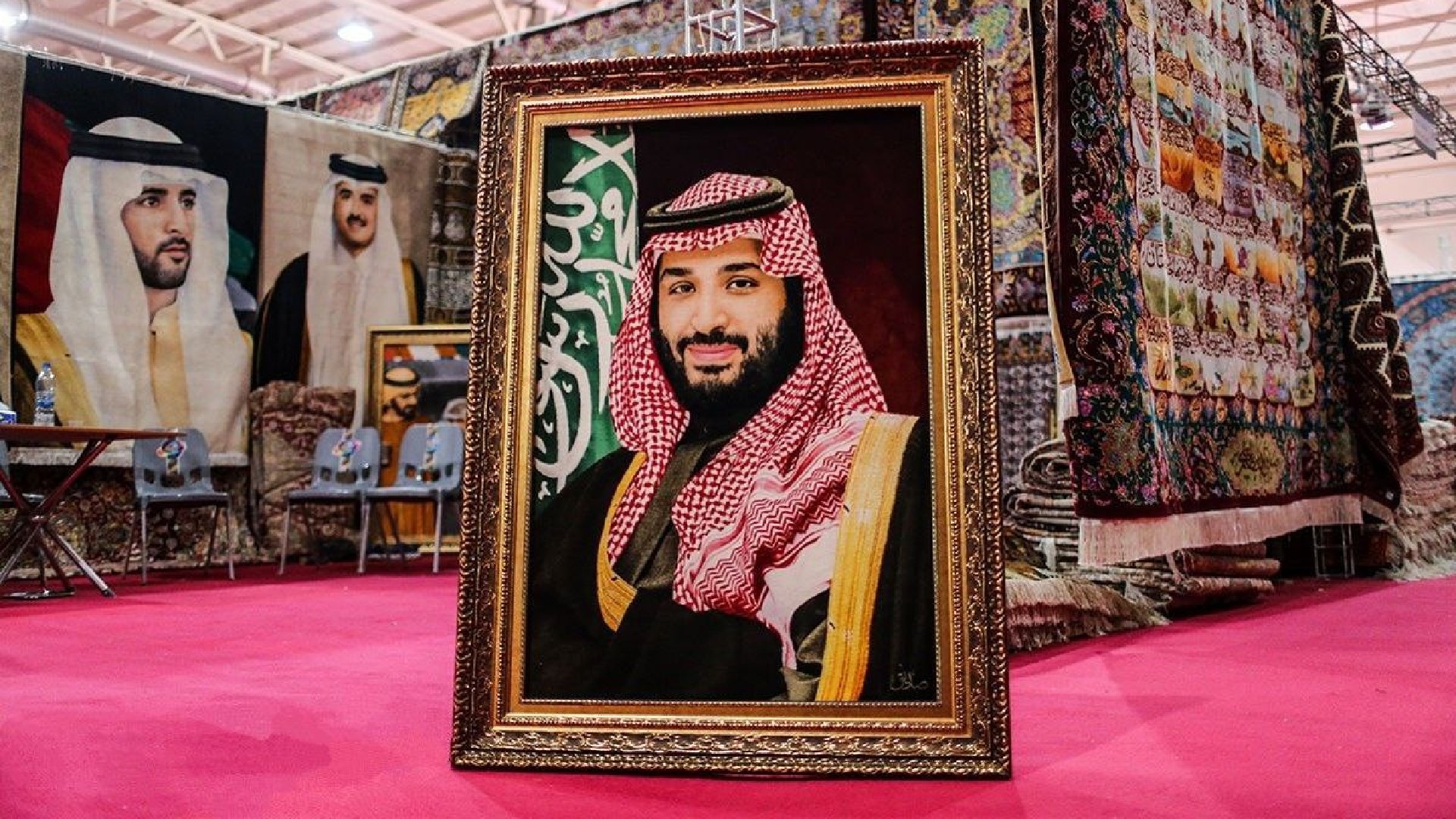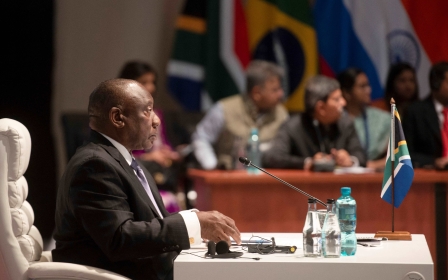Iranian press review: MBS featured on $10,000-worth handmade carpet

Iran's carpet policy toward Saudi Arabia
As the process of restoring ties between Tehran and Riyadh continues, with the reopening of embassies and the reintroduction of ambassadors, the Iranian side rushed to assure the Saudis of their good intentions by showcasing exquisite carpets showing an image of Saudi Arabia's Crown Prince Mohammed bin Salman.
Iran has a long tradition of weaving lavish handmade carpets, sometimes depicting images of holy Muslim sites, religious figures and influential political leaders.
Last week, a photo went viral on Farsi social media and was republished by official outlets revealing an expensive carpet at Iran's 30th International Handmade Carpets Fair with the image of the Saudi crown prince.
Some Farsi media estimated that this carpet would cost about $10,000.
The move to glorify the crown prince apparently began after China brokered a deal between Iran and Saudi Arabia in March to restore political ties.
Before that agreement, the two countries were arch-enemies, and government outlets in Iran referred to Mohammed bin Salman as "worse than a criminal", ruling Saudi Arabia with a "medieval governing system".
The ultra-conservative President Ebrahim Raisi had also harshly denounced the Saudis before the restoration of ties, labelling the country's royal family "the cancerous tumour of the Islamic world".
The official media that republished the image of the carpet avoided offering any explanation.
Khabar Online published the photo under the headline "Strange and unbelievable; bin Salman's image in Tehran's carpet fair".
The Ghatreh website also published the image, under the headline: "Suddenly Saudi Crown Prince was seen in Tehran!"
Tehran steps up measures against Afghan refugees
Following an attack on the Shah Cheragh holy shrine in Shiraz, the capital of Fars province, officials have intensified restrictions on Afghan refugees and immigrants in the city by prohibiting them from living and working as vendors in "the area around the Shrine".
Iran's state news agency, IRNA, announced the news without elaborating on the ban's details and the exact area it encompasses.
Behrang Ghorbani, the director of immigrants and foreign citizens at the Fars provincial office, told IRNA that the decision was made because of the latest attack by Tajik nationals trained in Afghanistan. The attack left two dead and seven injured.
"Those who own property in the area around the shrine will not be permitted to rent their properties to foreign citizens," he was quoted as saying.
Iranian officials use the term "foreign citizens" to refer to Afghan refugees and immigrants living in Iran.
According to the official, "foreign citizens" who had rented a place in the forbidden zone before the attack were given a 20- to 30-day deadline to vacate their residences.
Ghorbani noted that the move comes two months after Fars already became the first province in Iran to ban Afghan refugees from employment in shops or working as street vendors throughout the province.
"Fars was the first province to enforce this ban, and now other provinces are also implementing the same measure," he was quoted as saying.
Official sources say more than five million Afghans live in Iran, many working as vendors and construction workers.
According to Ghorbani, about 358,000 Afghan people live in Fars province, of whom about 121,000 entered Iran after the Taliban came to power in Afghanistan in 2021.
One in 1o Iranians are illiterate
Iran's former education minister, Yousef Nouri, has revealed that over 8.7 million Iranians cannot read or write. This constitutes about 10 percent of the country's 87.92 million population, the ISNA news agency reported.
The new illiteracy statistic was announced a few days after parliament decided to dissolve the Literacy Movement Organization of Iran, which was tasked with eradicating illiteracy in the country by the Islamic republic's founder, Ruhollah Khomeini.
'We have not done anything to provide education for those who are older than 49, while in the world, the education goal continues until the end of life'
- Yousef Nouri, former education minister
Nouri said the authorities had only focused on providing education for individuals aged six to 49.
"We have not done anything to provide education for those who are older than 49, while in the world, the education goal continues until the end of life," he was quoted as saying.
"Once, literacy meant to be able to read and write, but now there are several levels of literacy, and at the top of it, literacy is knowledge that leads to social responsibility," he said.
Criticising parliament's decision, Nouri urged legislators to strengthen a mechanism that tasks the education system with reducing the illiteracy rate every year and providing education for adults.
The Literacy Movement Organization of Iran has increased the literacy rate compared to the era before the 1979 revolution. According to data published in 1977, about 59 percent of Iranians were illiterate at that time.
*Iranian press review is a digest of news reports not independently verified as accurate by Middle East Eye.
Middle East Eye propose une couverture et une analyse indépendantes et incomparables du Moyen-Orient, de l’Afrique du Nord et d’autres régions du monde. Pour en savoir plus sur la reprise de ce contenu et les frais qui s’appliquent, veuillez remplir ce formulaire [en anglais]. Pour en savoir plus sur MEE, cliquez ici [en anglais].





